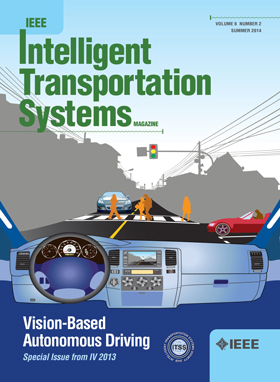Origin-Destination Matrix Prediction in Public Transport Networks: Incorporating Heterogeneous Direct and Transfer Trips
IF 7.9
1区 工程技术
Q1 ENGINEERING, CIVIL
IEEE Transactions on Intelligent Transportation Systems
Pub Date : 2024-09-05
DOI:10.1109/TITS.2024.3447611
引用次数: 0
Abstract
The efficient operation of urban bus networks largely depends on optimised scheduling conducted before the one-day operation, crucially relying on reliable origin-destination (OD) information. Passengers travel on direct and transfer trips due to complex infrastructure and services in bus networks. These two differential behaviours necessitate a model that captures topological differences to accurately predict the OD matrix. Responding to this need, we propose a graph-based deep learning model, termed the Direct-Transfer Heterogeneous Graph Network (DT-HGN). This model is designed to predict the OD matrix whilst expressly distinguishing direct and transfer passenger behaviour. DT-HGN articulates direct and transfer trips as distinct graphs, each characterised by its unique adjacency matrix. The model’s architecture embraces two principal blocks: a Spatio-Temporal (ST) construct and an Auto-Encoder (AE) component. The ST-block applies a Gated Recurrent Unit model and a Graph Convolutional Network to discern features of direct and transfer trips, considering both temporal and spatial dimensions. Conversely, the AE-block utilises a heterogeneous graph convolutional network to transmute the two heterogeneous graphs into latent features. Our real-world validation process, executed over a two-month period on an urban bus network, attests to DT-HGN’s robust ability in accurate OD matrix prediction, outperforming contemporaneous state-of-the-art models. This study addresses the crucial need for a comprehensive network-level OD matrix and provides a new perspective for optimising the entire public transport network by accurately depicting station-to-station demand. The approach extends beyond the limitations of traditional bus lines, allowing for a more comprehensive analysis and improvement of urban public transport systems.公共交通网络中的始发站-目的地矩阵预测:纳入异质直达和换乘出行
城市公交网络的高效运营在很大程度上取决于在单日运营前进行的优化调度,这主要依赖于可靠的始发站(OD)信息。由于公交网络中的基础设施和服务非常复杂,乘客既有直达的,也有换乘的。这两种不同的行为需要一个能捕捉拓扑差异的模型来准确预测出发地-目的地矩阵。针对这一需求,我们提出了一种基于图的深度学习模型,称为直达-换乘异构图网络(DT-HGN)。该模型旨在预测 OD 矩阵,同时明确区分直达和中转乘客行为。DT-HGN 将直达车和换乘车作为不同的图,每个图都有其独特的邻接矩阵。该模型的结构包括两个主要部分:时空(ST)结构和自动编码器(AE)组件。时空模块应用门控递归单元模型和图卷积网络,从时间和空间两个维度辨别直达和中转行程的特征。相反,AE 块利用异构图卷积网络将两个异构图转换为潜在特征。我们在城市公交网络上进行了为期两个月的实际验证,证明了 DT-HGN 在准确预测 OD 矩阵方面的强大能力,其表现优于同时代的先进模型。这项研究满足了对全面的网络级 OD 矩阵的关键需求,并通过准确描述车站到车站的需求,为优化整个公共交通网络提供了新的视角。该方法超越了传统公交线路的局限性,可对城市公共交通系统进行更全面的分析和改进。
本文章由计算机程序翻译,如有差异,请以英文原文为准。
求助全文
约1分钟内获得全文
求助全文
来源期刊

IEEE Transactions on Intelligent Transportation Systems
工程技术-工程:电子与电气
CiteScore
14.80
自引率
12.90%
发文量
1872
审稿时长
7.5 months
期刊介绍:
The theoretical, experimental and operational aspects of electrical and electronics engineering and information technologies as applied to Intelligent Transportation Systems (ITS). Intelligent Transportation Systems are defined as those systems utilizing synergistic technologies and systems engineering concepts to develop and improve transportation systems of all kinds. The scope of this interdisciplinary activity includes the promotion, consolidation and coordination of ITS technical activities among IEEE entities, and providing a focus for cooperative activities, both internally and externally.
 求助内容:
求助内容: 应助结果提醒方式:
应助结果提醒方式:


